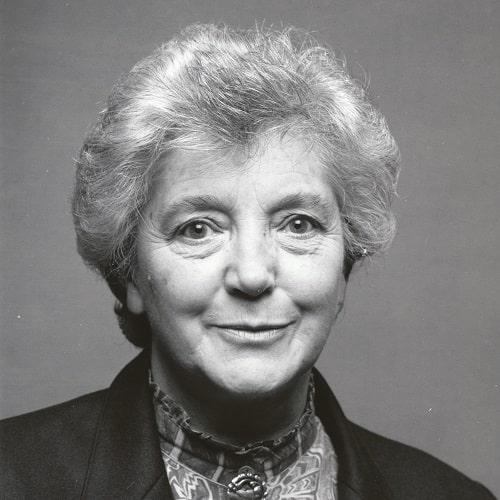Winifred May Watkins was a biochemist and head of the division of immunochemical genetics at the clinical research centre, Medical Research Council. She was born in Shepherd’s Bush, London, the second daughter of Albert Edward Watkins, a process engraver, and Annie Bertha Watkins. She was educated at St Stephen’s Parish Elementary School and then at Godolphin and Latymer School, where she was awarded a London County Council scholarship. She was evacuated at the start of the Second World War, but returned to London after a year and gained her Higher School Certificate in 1942.
She then joined the laboratory at the Lister Institute, which fulfilled the criteria for her war service, and worked with Walter Morgan [Munk’s Roll, Vol.XI, p.405] on blood group antigens. In the evenings, she studied chemistry at Chelsea Polytechnic.
After gaining her BSc degree in 1947, she became a postgraduate student at St Bartholomew’s Hospital Medical School, under the supervision of Arthur Wormall. Her research on the action of nitrogen mustards on the changed immunological properties of body proteins after reaction with these agents led to the award of her PhD in 1950.
In the same year she returned to the Lister Institute, where she worked at the blood group research unit initiated by Morgan, researching the chemical structure of red cell antigens in the ABO blood group. From 1960 to 1961 she was a Henry Wellcome travel fellow at the University of California at Berkeley, where she researched glycosyltransferases. In 1965 she was made a reader in biochemistry at the University of London and in 1968 she became a professor.
In 1975 the Lister Institute closed and Watkins moved to the Medical Research Council’s division of immunochemical genetics at Northwick Park, where she became head of the department. When the division closed in 1989 she continued her research at the haematology department at Hammersmith Hospital. She retired in 2000.
During her career she received many awards, including, in 1965, the Oliver Memorial Fund annual award in recognition of her outstanding contribution to the study of blood transfusions, the Karl Landsteiner award of the American Association of Blood Banks (in 1967) and the Paul Ehrlich and Ludwig Darmstaedter medal and prize from the Paul Ehrlich Foundation (in 1969). In 1986 she received the Kenneth Goldsmith award of the British Blood Transfusion Society, the Royal medal of the Royal Society in 1988, the Franz Oehleckler medal of the German Society of Transfusion Medicine and Immunohaematology in 1989, and the Philip Levine award of the American Society of Chemical Pathologists in 1990.
She was a fellow of the Royal Society, the Royal College of Pathologists, the Royal College of Physicians and the Academy of Medical Sciences. She was made an honorary member of the Biochemical Society in 2000.
RCP editor
[The Biochemist June 2004 p.56-59 www.biochemist.org/bio/02603/0056/026030056.pdf – accessed 7 December 2016; The Biochemical Society blog Standing on the Shoulders of Giantesses: Winifred May Watkins 6 February 2015 https://biochemicalsociety.wordpress.com/2015/02/06/standing-on-the-shoulders-of-giantesses-winifred-may-watkins/ – accessed 7 December 2016]

